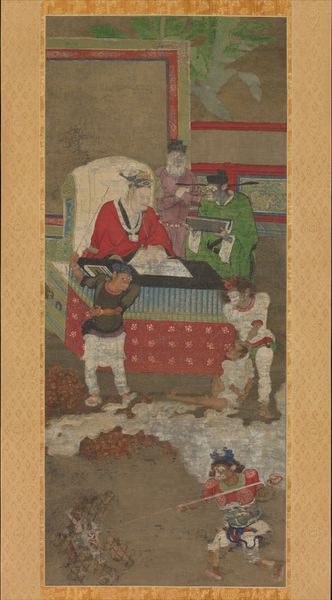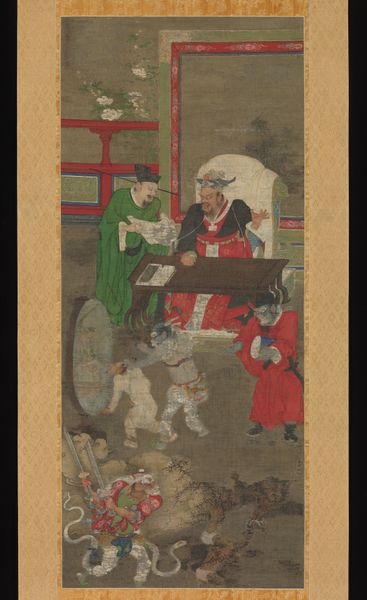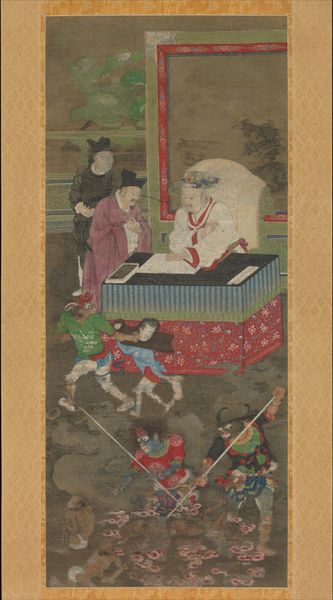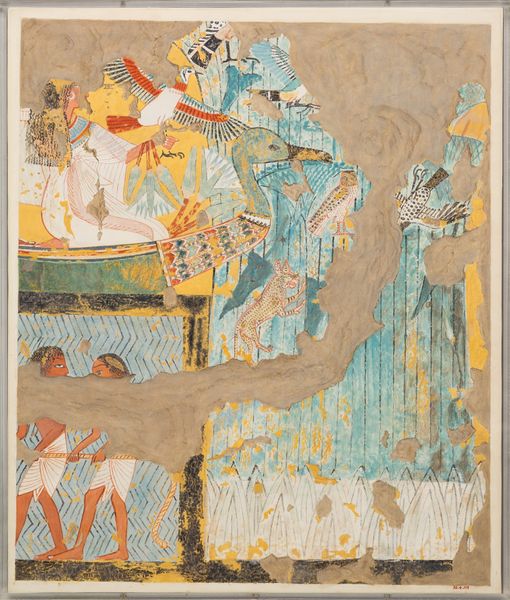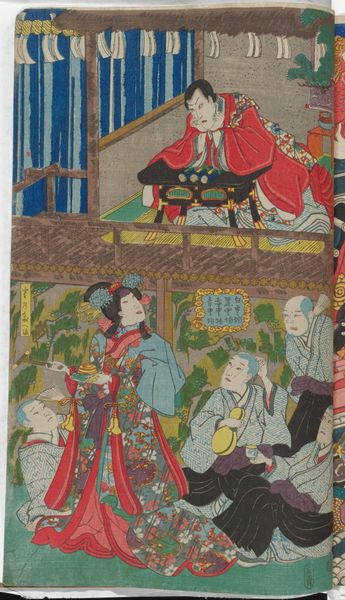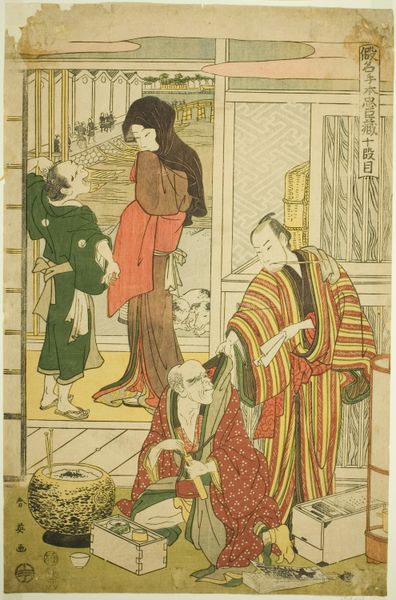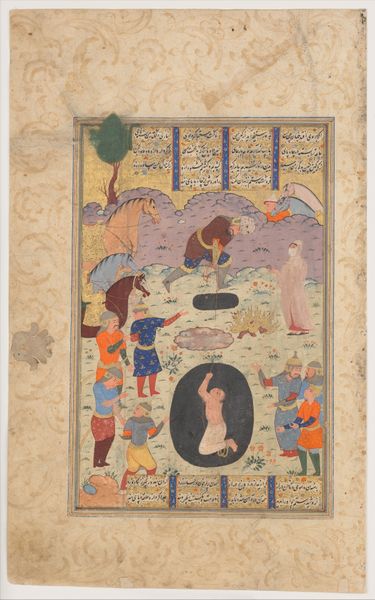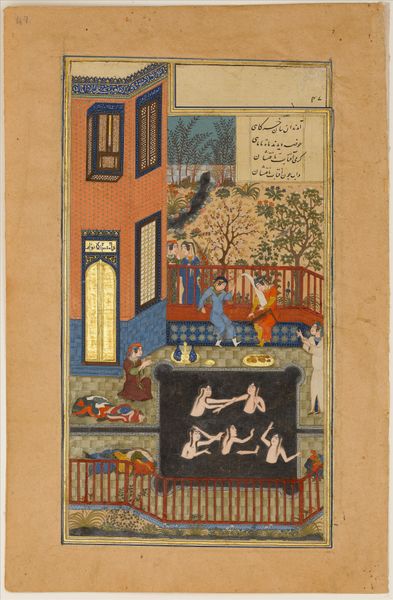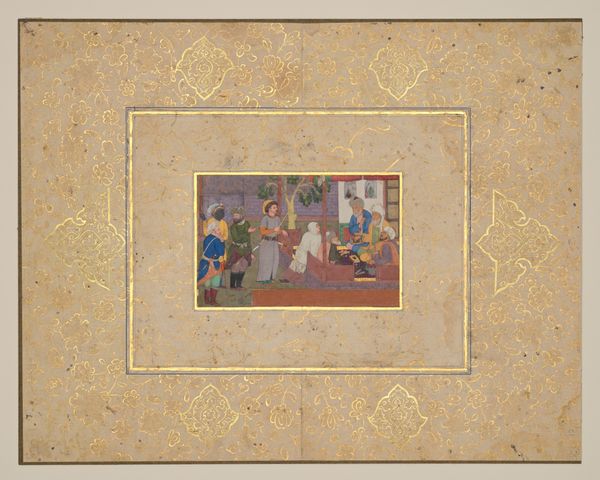
painting, watercolor
#
medieval
#
water colours
#
narrative-art
#
painting
#
asian-art
#
figuration
#
oil painting
#
watercolor
#
watercolor
Dimensions: Image: 51 x 19 1/2 in. (129.5 x 49.5 cm) Overall with mounting: 80 × 25 3/8 in. (203.2 × 64.5 cm) Overall with knobs: 80 x 27 1/2 in. (203.2 x 69.9 cm)
Copyright: Public Domain
Curator: Looking at this hanging scroll, "Ten Kings of Hell," likely made between 1167 and 1194, one feels drawn into a narrative teeming with drama, but also very controlled by an observing monarch at its top. Editor: My first impression is quite visceral. The subdued palette intensifies the disquiet of the hellscape, focusing the viewer's eye on the suffering. It seems that death itself has its bureaucracy, overseen by almost mundane observers! Curator: Precisely! Painted with watercolours, we believe the creator was Jin Chushi, who visualized aspects of Chinese Buddhist beliefs regarding the afterlife. He wasn't so much interested in scaring us as making us reflect on these beliefs. Editor: It certainly does that! It is very carefully staged, where the almost indifferent judgment handed down from above results in earthly torment in the form of symbolic purgatory. Do you find any commentary of its specific placement as an object and in society? Curator: Good point; what stands out to me is the integration of Chinese social and political structures, that of the civil administration in place during the Song dynasty, reflected in this elaborate illustration. These symbols emphasize ideas of judgement but within an identifiable hierarchy. It's as if the image itself recreates systems and familiar hierarchies to offer clarity to abstract concepts like sin, judgement, punishment. Editor: But it’s still nightmarish, right? Even with its social metaphors, this artist makes real use of iconographic language that taps into a far deeper fear of judgment but the kind administered dispassionately and by peers rather than a moral authority. It challenges a vision of heaven in stark terms by placing on stage our social and bureaucratic order as hell. Curator: The composition is quite compelling when you put it that way. While there is much we do not know, it’s amazing that something like the continuity of social judgment can be identified and reinterpreted with new resonance centuries after its original setting. Editor: And the impact lies in understanding that hell, far from being something otherworldly, might just mirror back the inequalities and injustices that are right here, made by the same rules as this life. Curator: True indeed; by revealing such a deep continuity of the human drama across time and beliefs, art truly earns its place.
Comments
No comments
Be the first to comment and join the conversation on the ultimate creative platform.
